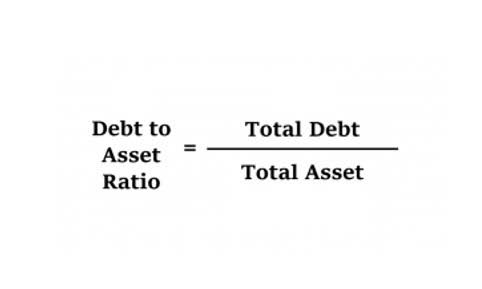
Here’s an example of a cash flow statement generated by a fictional company, which shows the kind of information typically included and how it’s organized. Essentially, the accountant will convert net income to actual cash flow by de-accruing it through a process of identifying any non-cash expenses for the period from the income statement. The most common and consistent of these are depreciation, the reduction in the value of an asset over time, and amortization, the spreading of payments over multiple periods. On the other hand, if your operating activities were causing this negative cash flow, there would be a real cause for concern.

Examination of Real-Life Company Cash Flow Statements
- The term cash flow from investing activities refers to the section of the cash flow statement that reports the cash inflow and cash outflow from a business’s investment-related activities.
- Being one of the three major sections, it directly influences the end value of the company’s cash and cash equivalents.
- These three companies have different things to offer in the cash flow from Investing activities part of the cash flow statement.
- A low ratio could also mean that a company is generating a lot of cash flow from selling its existing assets, which could be a sign of distress or restructuring.
- Even change in the cash position due to activities like acquisition, merger etc, will also be considered in this.
Another way to boost your cash flow is to ask for payments immediately rather than waiting to send out your invoices. Another interesting aspect to look into this CFI is the column of proceeds from Accounting Security the disposal of fixed assets and proceeds from the disposal of a business. If the figures are substantially high, it can help visualize why the company is disposing of assets. Below are an example and screenshot of what this section looks like in a financial model. Notice how every year the company has “Investments in Property & Equipment,” which are its capital expenditures.

Links to Other Financial Statements
Investment activities also have a direct bearing on sustainability ratings assigned by external agencies. These ratings often refer to environmental, social, and governance (ESG) criteria, with particular attention paid to a firm’s investing activities. To build investing activities a cash-flow-driven investment portfolio, consider cash flow needs, return expectations, risk preferences, and diversification benefits. Cash flow from investment can help businesses maximise returns and financial growth.
What is Included in Cash Flows from Investing?

Net cash flow from investing activities provides vital clues about a company’s strategic priorities. If a significant portion of this income is used to fund eco-friendly practices or socially-conscious initiatives, it can signify the organization’s dedication to sustainability and CSR. Such investments may include the development of green technologies, funding research into renewable energies, improving waste management, or implementing inclusive and equitable business operations. A company’s financial stability can be assessed through the lens of its investment activities. Companies with a persistent negative net cash flow from investing could face financial stability risks in the long run.
- It is useful to compare the cash flow from investing activities over time and across different companies to identify the trends and patterns that reflect the company’s performance and prospects.
- To help visualize each section of the cash flow statement, here’s a cash flow statement example of a fictional company generated using the indirect method.
- Cash flow from investing activities is a key indicator that shows how much cash you have generated or spent on your long-term assets, such as property, plant, equipment, securities, or loans.
- From an accounting perspective, a cash flow statement is a financial statement breaking down cash flows from operations, investing, and financial activities.
- Like all cash flow, CFI is the net amount of cash flow for a specific time (accounting period).
This ratio measures how much a company invests in long-term assets relative to its cash flow from operating activities. A high ratio indicates that a company is investing more than it earns from its core operations, which could be a sign of growth potential or high returns on investment. However, a high ratio also implies that a company is relying on external financing, such as debt or equity, to fund its investing activities, which could increase its leverage and cost of capital.

Since the income statement and balance sheet are based on accrual accounting, those financials don’t directly measure what happens to cash over a period. Therefore, companies typically provide a cash flow statement for management, analysts, and investors to review. Some of the most common and consistent adjustments include depreciation and amortization. Wise long-term investments will boost your cash flows from operations and ultimately boost your company’s financial health. For more information on how to increase your cash flow, please check out our article on common cash flow problems for small businesses.
Compare the risk and reward of the investment with your risk tolerance and return objectives. Depending on your risk tolerance and return objectives, you may prefer investments that have a low risk and a low reward, a high risk and a high reward, or a balanced risk and reward. For example, if you have a low risk tolerance and a low return objective, you may prefer investments that have a low risk and a low reward, such as government bonds, money market funds, or certificates of deposit. If you have a high risk tolerance and a high return objective, you may prefer investments that have a high risk and a high reward, such as growth stocks, venture capital, or cryptocurrencies. If you have a moderate risk tolerance and a moderate return objective, you may prefer investments that have a balanced risk and reward, such as value stocks, corporate bonds, or real estate.
Has a negative cash flow from investing activities for all three years, which means that it is spending more cash on its long-term assets than it is receiving from them. The cash flow from investing activities is also increasing in absolute how is sales tax calculated value, which means that the company is increasing its investing activities over time. Is investing so much cash, we need to look at the breakdown of its investing activities, which is shown in the table below.
